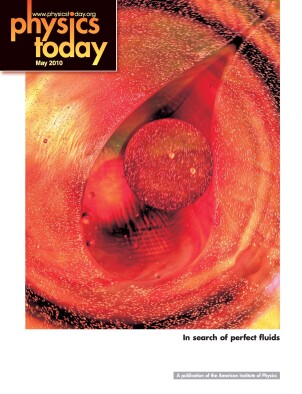More light on ruby laser’s history
DOI: 10.1063/1.4796259
Having worked with lasers since the early 1960s, I read “Bell Labs and the Ruby Laser” with great interest. The Bell Labs scientists retell their side of the story, but they shortchange the role of others, particularly Ted Maiman.
One tenet of Western science is that once a new breakthrough or invention is announced, it can be reproduced by one skilled in the arts. Fifty years ago that is exactly what happened at Bell Labs after they heard what had happened at Hughes Research Laboratories on 16 May 1960.
At that time scientists at Bell Labs were emphasizing continuous emission in their attempts to develop optical masers. They must have been completely surprised when they learned that a pulsed xenon flash lamp could produce, in a lightly doped pink ruby, a population inversion that resulted in the generation of coherent pulsed laser light at ruby’s 694.3-nm lower fluorescent line, via feedback from the parallel, polished, and metallized ends of the rod (an optical Fabry-Perot).
Playing catch-up, the Bell Labs team hastily put together a flash-lamp-pumped pink ruby laser with reflecting ends, and it worked even better than Maiman’s. But rather than sending congratulations to their counterparts at Hughes, the Bell team chose to cast doubts on Maiman’s experiment. They dismissed it as clever engineering, and the Bell folks claimed that they had invented the first visible laser.
By concentrating on the continuous-wave communication aspects of lasers, the Bell team missed the energy storage aspect of an inverted population in flash-lamp-pumped solid-state lasers.
Those of us who knew Maiman personally, and had reproduced his experiment independently, fully expected him to receive a Nobel Prize for his work. Alas, it never happened.
It is good and proper that the leap to the first visible light laser will be celebrated each year on 16 May, the day of its first reduction to practice by Theodore Maiman 50 years ago. Unfortunately he did not live long enough to receive this acknowledgment from the scientific and engineering communities.
More about the Authors
Ralph F. Wuerker. (rwuerker@roadrunner.com) Westlake Village, California, US .
